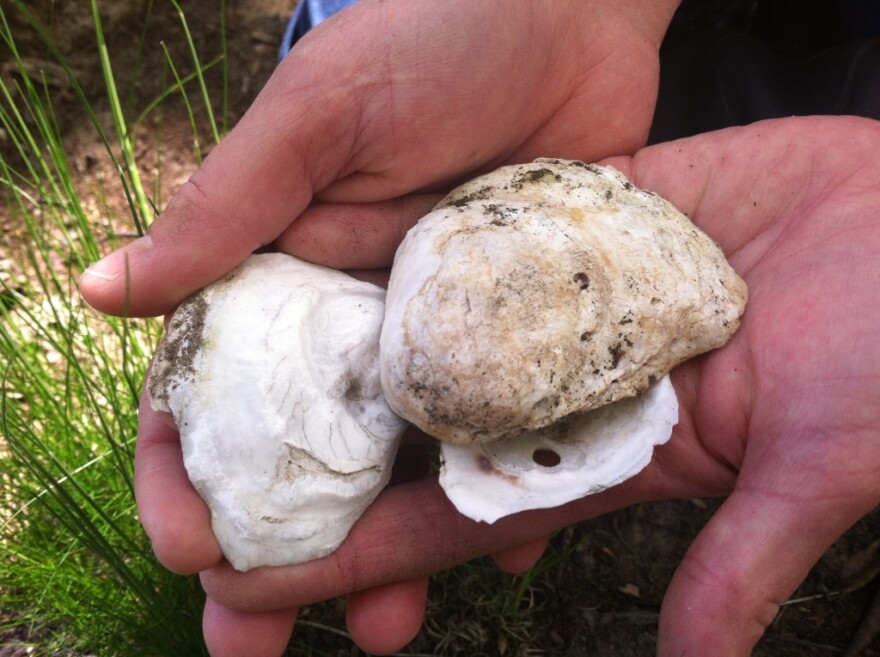Scientists at the Smithsonian Environmental Research Center are studying Native American trash heaps full of oyster shells around the Chesapeake Bay that date to thousands of years ago.
Susan Cook-Patton and colleagues published an article in the journal Landscape Ecology that describes how these old oyster shells enrich the soil, spurring the growth of unusual communities of wildflowers and grasses.
The scientists examined 10 of ancient dump sites in a forested area near the Rhode River, in Edgewater, south of Annapolis, with the oldest formed 3,250 years ago.
They found that native wildflowers grow in more abundance on top of former Native American trash heaps than they do in the woods surrounding them.
These ancient landfills are fertile ground for researchers like Cook Patton of the Smithsonian Environmental Research Center, who led me to visit one of her research sites south of Annapolis.
“We are standing right on the edge of the Rhode River, and if you look down you can see that soil is filled with oyster shells, “ Cook Patton said. “And on top of that soil there is a different plant community that areas right next to it, where there aren’t any oyster shells.”
She and her colleagues studied 10 of these Native American dump sites near the Chesapeake Bay and learned that the Algonquian people – perhaps Piscataways -- who lived here about 3,250 years ago had a lot oysters in their diet.
And the places where they enjoyed their seafood feats and left their waste later became unusually dense with wildflowers including saltmarsh mallow, Jack-in-the-pulpit, and Lateflowering Thoroughwart, as well as grasses. Meanwhile, the adjacent areas around these dumps were dominated by young oaks, maples and other trees.
“And what we found was that the oyster shells are filled with things lie calcium and nitrogen that help elevate the nutrients in the soil, which helps give these herbaceous species an edge, so that they can grow faster and become established even in an forested area,” Cook Patton said.
The oyster shells from some of these sites are taken to the National Museum of Natural History in Washington DC. Here, Smithsonian Archaeologist Torben Rick studies them for clues about not only what Native American societies were like, but also what the Chesapeake Bay was like thousands of years ago. And how Native Americans may have been shaping the Bay and its landscape long before Captain John Smith first saw it in 1607.
“One thing that’s clear is that people were influencing everything around them,” Torben Rick said. “Whether it’s through harvesting thousands of oysters and affecting a local reef, to burning parts of the landscape, and clearing it. All of these things leave fingerprints across the landscape that can be difficult to see now, but the legacies that carry on.”
Elsewhere around the world, the gardening of the ancient Mayans remains evident in the patterns of growth in forests of modern Belize. In Northern France, the intensity of Roman farming still influences the diversity of life in French forests that have not been farmed in nearly 2000 years.
What will be our landscape legacy? What will grow from American malls and landfills, thousands of years in the future? It may not be a bed of wildflowers.




